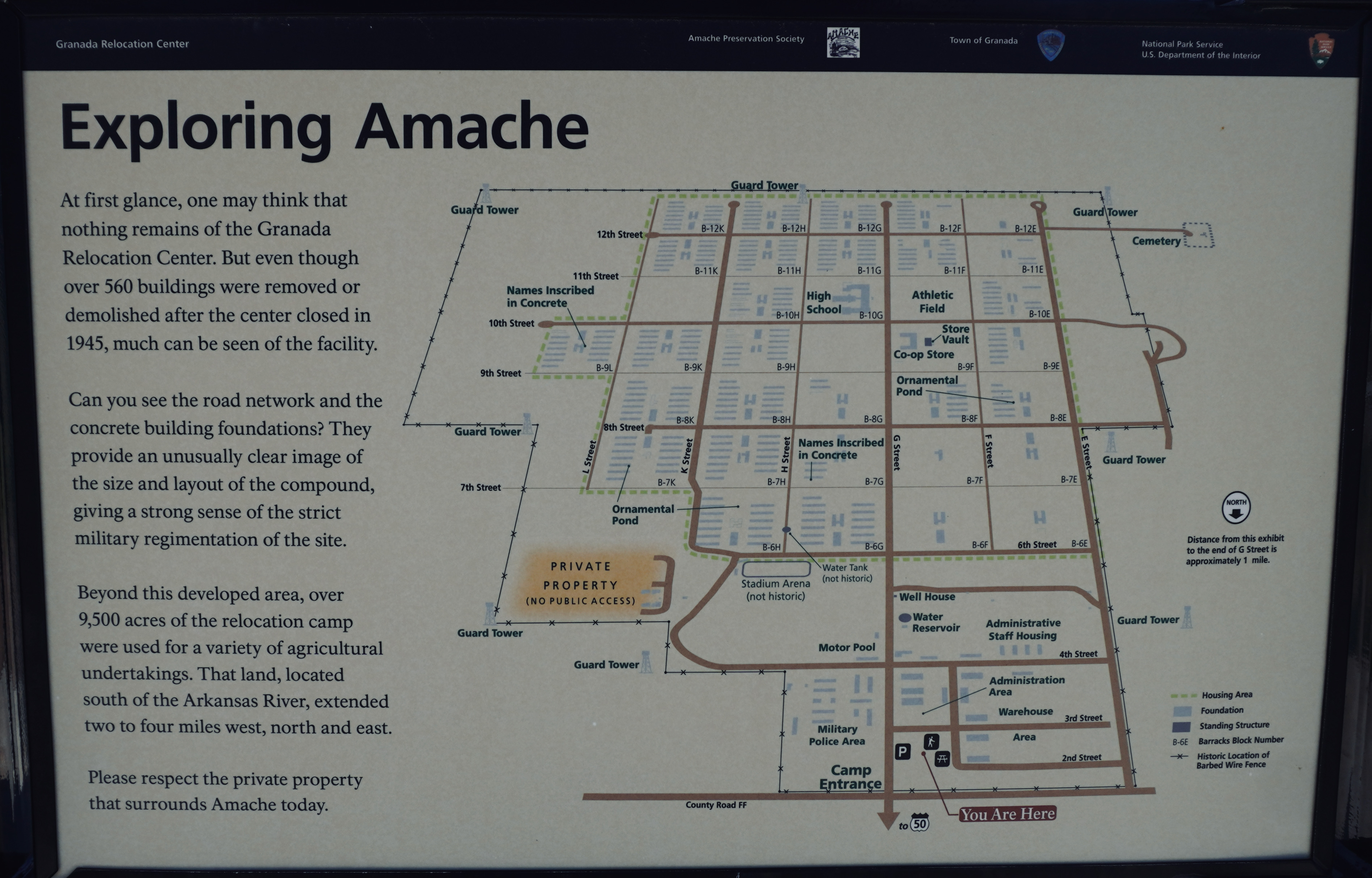The Amache Japanese Relocation Center or also called the Granada Relocation Center was an internment camp located near Granada Colorado in the southeastern part of the state. It is a large field area with building foundations along highway 50 and is an easy stop to see and look around. It’s worth your time to visit because it shows a really dark, difficult time for our country and for our citizens. The people showed incredible strength during their internment. I love stopping by these places to see the perseverance of people under incredible pressures and situations. It is also really important in American history because many of the laws and orders that caused this are still valid in the USA today.
Useful Links
- Amache Relocation Center Location
- Amache Official Website
- National Park Service Official Website
- National Archives Internment Information
The Dark History of Japanese-American Internment
I think it’s crazy to think that Americans were told to leave their houses and towns in order to get on trains to go out into the Colorado desert to live in a camp with watchtowers! It goes to show how important it is to know our history and there’s nothing better than stopping by the very place that is such a dark stain on the history of this country.
The Granada Relocation Center or “Amache Internment Camp” was where this happened. It happened all around this country. Japanese-Americans went to internment camps under the supervision of the government during World War 2. There were questions about their “loyalty” since we were at war with Japan.
People spent several years in the camps and usually lost their original homes and property after the move to these camps. The stunning thing is after the war a lot of these laws and orders were never technically rescinded so a lot of the mandates are still “good law” since the courts and legislature did very little to stop enforcement.

The location of the silk-screen printing shop on Amache Relocation Center. 
The suggested tour areas at Amache Internment Camp in Colorado. 
The info board about the silk-screen printing shop at Amache. 
The info board explaining hazards at Amache Relocation Center in Colorado. 
The mess hall information board at the Amache Japanese Internment Camp in southeast Colorado. 
A sign explaining the important areas around the Amache Relocation Center. 
A sign explaining the daily life of the people at Amache. 
A sign explaining life in the barracks at Amache. 
The information board providing information about tours and the museum for Amache. 
A sign showing how Amache is being preserved and how residents remember their time there. 
An information board describing the Amache newspaper. 
The Amache Information Board at the relocation center. 
The Amache Honor Roll monument. 
The garden info board at Amache. 
The info board describes the agricultural activities at Amache Relocation Center in southeastern Colorado.
Amache Today
The Amache Relocation Center near Granda Colorado is now just a large field, information kiosks, and a few foundations left. The roads are the main historical marker and remnants of the camp. The information area has several panels and boards dedicated to telling the story of the camp and the people who lived there
You are also free to drive around the majority of the old camp to see the rows and rows of old foundations and former building locations. I even stopped and got out and checked out several areas more closely. Several old foundations have information boards indicating what was at that location during the camp’s time.
I’ve added most of the photos I took that day and the location is found in the link above. When you’re traveling through this area, or purposely going to the area, make sure to stop by the location and see the actual dark history that is found there. Don’t forget the museum that is in town and the website is linked above. I believe places like this should never be forgotten and the lessons learned should always be taught!